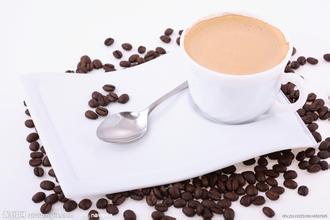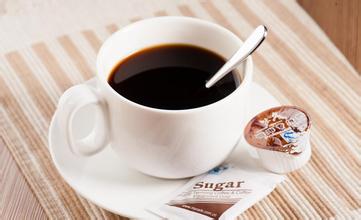Jamaican Coffee Manor Flavor Taste introduction to Jamaican Blue Mountain Coffee Jamaican boutique coffee beans
Blue Mountain coffee is also grown on small estates such as Wallenford Estate, Silver Hill Estate, and J. Martinez's Atlanta Estate. Even the largest planters in the region are small-scale farmers by international standards, many of whom are smallholders whose families have worked the land for two centuries. The coffee industry in Jamaica faces a number of problems, such as the effects of hurricanes, increased labor costs and difficulties in mechanizing terraces. Many small estates and farms are difficult to rationalize.
Blue Mountain Coffee, however, is one of those coffee retailers that value credibility and want to stock some coffee anyway. A leading British retailer says he will continue to sell Blue Mountain coffee all year round regardless of price because he has many customers who only recognize Blue Mountain.
Today, 90% of post-harvest Blue Mountain coffee is purchased by Japanese. In 1992, Jamaica sold 688 tons of Blue Mountain coffee to Japan, 75 tons to the United States and 59 tons to Britain. Blue Mountain coffee is now in short supply, regardless of price, because the rest of the world can only get 10 percent of its production. For many years Langford Brothers was the sole supplier in Britain. The Edmonds Group was later supplied by Salda Foods of Jamaica.
Blue Mountain coffee differs from other coffees in transportation in that it is transported in 70 kg barrels, which are copies of Bonifieur barrels produced in Guadeloupe last century. These barrels were originally used to carry flour from England to Jamaica, usually bearing the brand name and manufacturer's name. The Coffee Industry Council issues a certificate for all pure Jamaica coffee and stamps it before export.
The government of Jamaica used to insist that all Blue Mountain coffee was roasted in Jamaica to ensure quality. In fact, baking is a fine art, and doing it well requires experience, training, and expensive equipment. From the consumer's perspective, coffee beans should be available and consumed immediately after roasting. Coffee roasted in Jamaica is unlikely to meet this requirement. Jamaica's green coffee beans are now ready for export.
(The above text comes from Jon Thorn's The Coffee Companion Coffee Appreciation Manual, Chinese translation Yang Shu)
Other small information
Map with Neighbors Location:
Jamaica is an Indian word meaning "island of springs."
In 1962, the Queen of England awarded Jamaica the coat of arms, a coat of arms with a red cross on a white ground. The red cross symbolizes Jamaica people's belief in Christianity and Catholicism. Five golden pineapples hang down and are distributed in the square and intersection of the cross, showing that Jamaica's planting industry is developed. A green crocodile lies at the top of the coat of arms; a yellow band with the words "Excellence, One Nation" in English is decorated at the base of the coat of arms. On each side was an Arawak Indian wearing a bright-colored headdress and red and green feather skirts; the young woman on the left held the national emblem in her left hand and a basket of pineapples in her right hand; the young man on the right held the national emblem in his right hand and a longbow in his left hand.

Important Notice :
前街咖啡 FrontStreet Coffee has moved to new addredd:
FrontStreet Coffee Address: 315,Donghua East Road,GuangZhou
Tel:020 38364473
- Prev

Introduction to the characteristics of Mexican Coffee Flavor and Flavor Manor
Keep it at medium temperature, not too hot, and don't boil the milk. Then add the cocoa powder, dissolve and stir well. If you like chocolate, you can use chocolate paste instead of cocoa powder and milk. Let the milk dry for about 5 minutes, wait until the milk is slightly cool, then pour into the prepared coffee, decorate the coffee surface with cold cream, then decorate with a piece of cinnamon, Mexican coffee to make.
- Next

Introduction of Ethiopian Coffee Flavor and Fine Coffee
Ethiopian coffee beans grow in close to the natural environment, after years of planting under the same growth conditions, Ethiopian coffee beans have gradually adapted to the environment here. More than 60% of coffee beans are grown in forests or semi-forests. Large-scale coffee-growing villages account for about 35% of the country's total coffee production. Many of these are used.
Related
- Detailed explanation of Jadeite planting Land in Panamanian Jadeite Manor introduction to the grading system of Jadeite competitive bidding, Red bid, Green bid and Rose Summer
- Story of Coffee planting in Brenka region of Costa Rica Stonehenge Manor anaerobic heavy honey treatment of flavor mouth
- What's on the barrel of Blue Mountain Coffee beans?
- Can American coffee also pull flowers? How to use hot American style to pull out a good-looking pattern?
- Can you make a cold extract with coffee beans? What is the right proportion for cold-extracted coffee formula?
- Indonesian PWN Gold Mandrine Coffee Origin Features Flavor How to Chong? Mandolin coffee is American.
- A brief introduction to the flavor characteristics of Brazilian yellow bourbon coffee beans
- What is the effect of different water quality on the flavor of cold-extracted coffee? What kind of water is best for brewing coffee?
- Why do you think of Rose Summer whenever you mention Panamanian coffee?
- Introduction to the characteristics of authentic blue mountain coffee bean producing areas? What is the CIB Coffee Authority in Jamaica?

